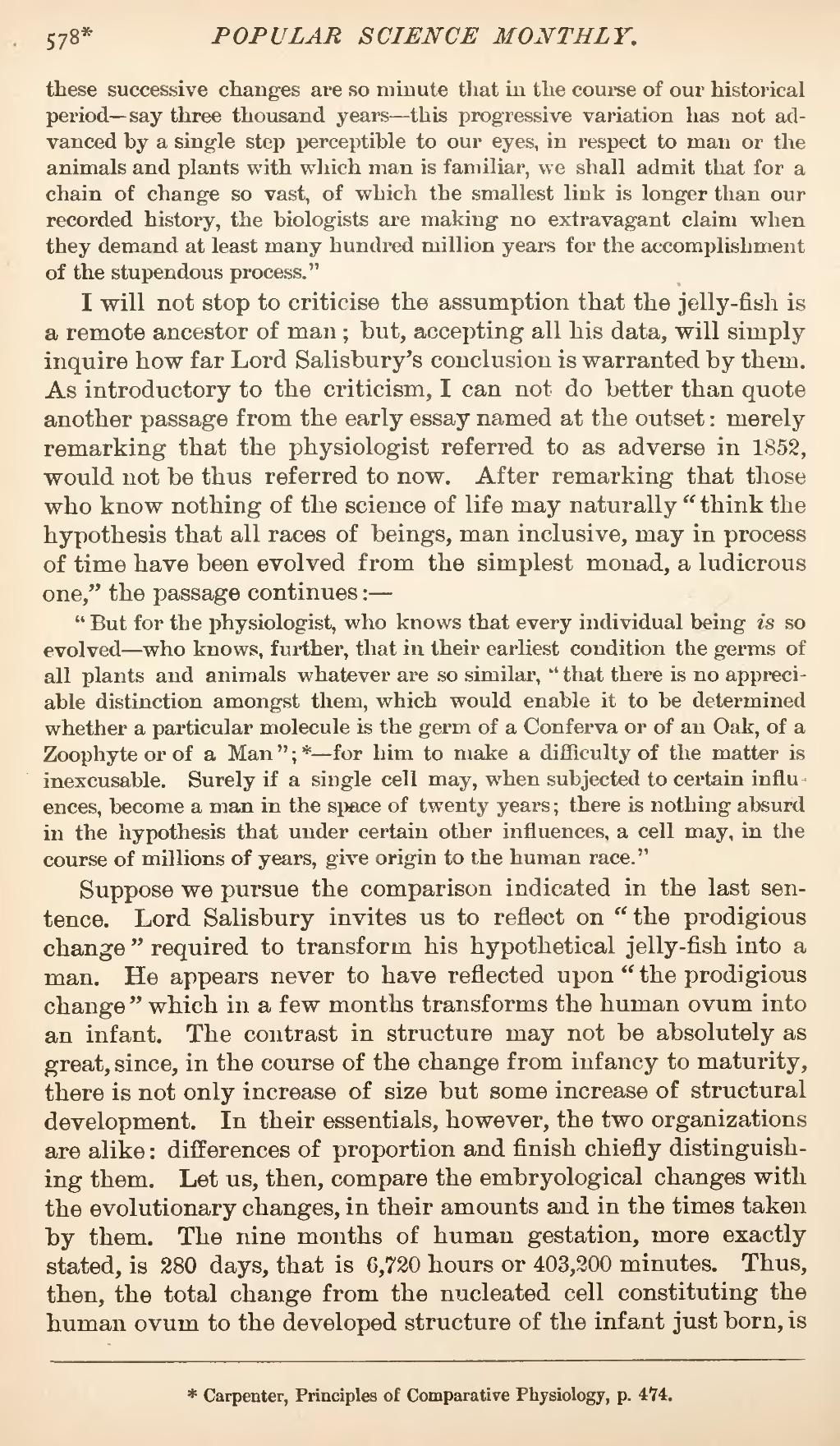I will not stop to criticise the assumption that the jelly-fish is a remote ancestor of man; but, accepting all his data, will simply inquire how far Lord Salisbury's conclusion is warranted by them. As introductory to the criticism, I can not do better than quote another passage from the early essay named at the outset: merely remarking that the physiologist referred to as adverse in 1852, would not be thus referred to now. After remarking that those who know nothing of the science of life may naturally "think the hypothesis that all races of beings, man inclusive, may in process of time have been evolved from the simplest monad, a ludicrous one," the passage continues:
Suppose we pursue the comparison indicated in the last sentence. Lord Salisbury invites us to reflect on "the prodigious change" required to transform his hypothetical jelly-fish into a man. He appears never to have reflected upon "the prodigious change" which in a few months transforms the human ovum into an infant. The contrast in structure may not be absolutely as great, since, in the course of the change from infancy to maturity, there is not only increase of size but some increase of structural development. In their essentials, however, the two organizations are alike: differences of proportion and finish chiefly distinguishing them. Let us, then, compare the embryological changes with the evolutionary changes, in their amounts and in the times taken by them. The nine months of human gestation, more exactly stated, is 280 days, that is 6,720 hours or 403,200 minutes. Thus, then, the total change from the nucleated cell constituting the human ovum to the developed structure of the infant just born, is
- ↑ Carpenter, Principles of Comparative Physiology, p. 474.
